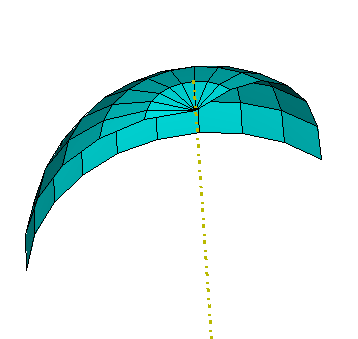Swept meshing of surfaces | ||
| ||
If you are creating a revolved swept mesh, Abaqus/CAE meshes the source side and revolves that mesh around the axis of revolution to the source side. The sweep path can be revolved a full 360°. You must use the Quad-dominated element shape option when the source side touches the axis of revolution at a point, because a layer of triangular elements is generated at that point. Abaqus/CAE cannot generate a revolved surface mesh when a single surface touches the axis of revolution at two points, unless the revolved surface is a sphere.
For example, the source side touches the axis of revolution at the top of the model shown in Figure 1 and a layer of triangular elements is generated at that point.

(For more information on assigning element shapes to a region, see Choosing an element shape.)